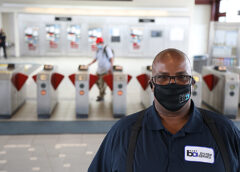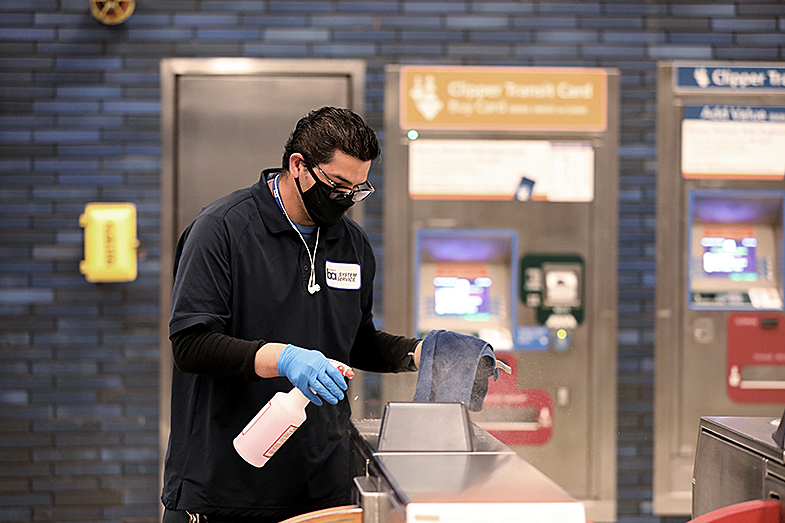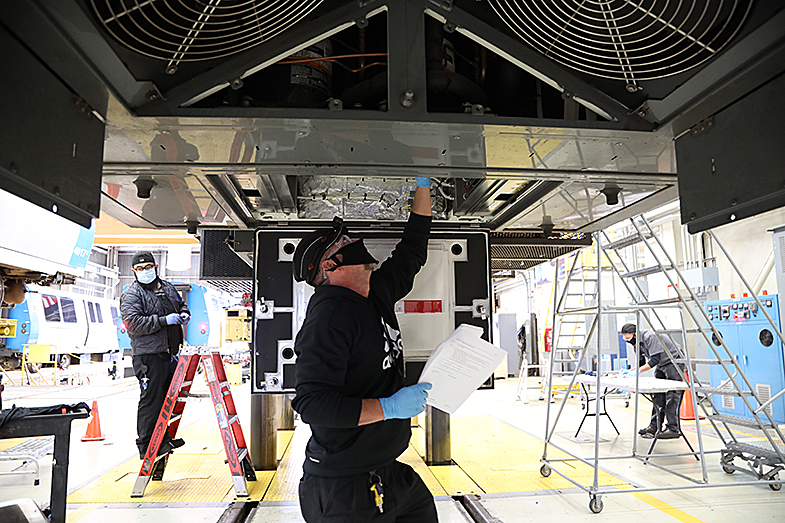San Francisco – More people are returning to BART to avoid traffic, support transit, and to get to work, school, appointments, and fun destinations across the region. BART’s 15 Step Welcome Back Plan outlines what has changed and what you can expect when you hop on board.
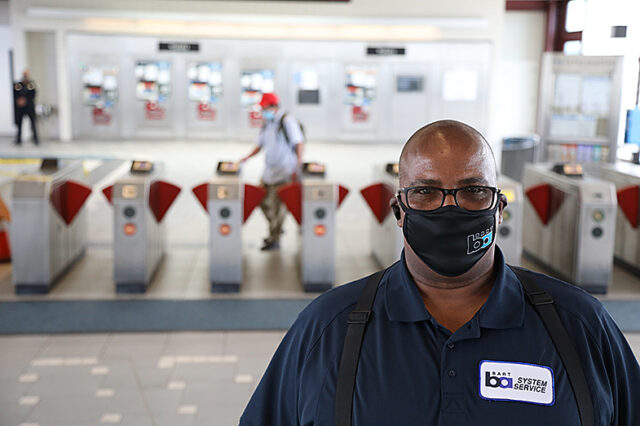
Step 1- Return to pre-pandemic service levels on August 2, 2021
BART will return to near-pre pandemic service on August 2 instead of August 30 as originally planned. The August 2 change includes extending closing times to midnight Monday through Saturday.
BART is currently running trains every 15 minutes on most lines during peak hours Monday-Friday. Trains run every 30 minutes during most off-peak times but extra trips were added to the Saturday schedule.
BART currently closes at 9pm, however we provide special event late night service for SF Giants and Oakland A’s night home games and special late-night limited service on Thursdays, Fridays, and Saturdays serving nine stations total from July 15, 2021-July 31, 2021.
The closure time varies station by station depending on where you are going. Check your specific trip. There are several local bus options that provide service in our area after 9pm and AC Transit provides transbay service.
While BART and all public transit will no longer be subject to state physical distancing requirements and capacity restrictions beginning June 15, 2021, BART will continue to run long trains all day to allow riders to spread out.
Starting August 2, 2021, BART will expand service hours and significantly increase service:
- Weekday service will be 5am-12am (currently 5am-9pm) with 15-min frequencies on all lines from 5am-8pm and 30-minute frequencies from 8pm-midnight.
- Saturday service will be 6am-12am (currently 8am-9pm) with 5-line service offering more options for Saturday riders, and for the first time, offering four trains per hour one most lines.
- Sunday service will remain 8am-9pm with 3-line service and 30-minute frequencies to accommodate BART’s critical cable replacement project and other infrastructure rebuilding work.
BART was able to advance the major schedule change by working collaboratively with labor partners to accelerate the hiring, training, and shift sign-up process
Step 2- 50% off in September
BART will offer a special promotion of 50% off all fares on Clipper for the entire month of September. The discount will apply to all fares including already discounted Clipper cards such as Youth, Senior, RTC, Clipper Start, and the Gator Pass.
Step 3 – Improved Traditional Cleaning
CDC guidelines tell us the risk of surface transmission of COVID-19 is low and daily fogging is not necessary as COVID-19 is primarily transmitted through the air. Instead our cleaning resources are better spent using traditional methods to clean cars, stations, and bathrooms. BART continues to use hospital-grade disinfectant while cleaning and we are now hiring dozens of more cleaners to support traditional cleaning methods with a special focus on ensuring clean seats and clean restrooms.
Some station entrances/exits had been closed at the height of the pandemic but have since been re-opened to welcome riders back.
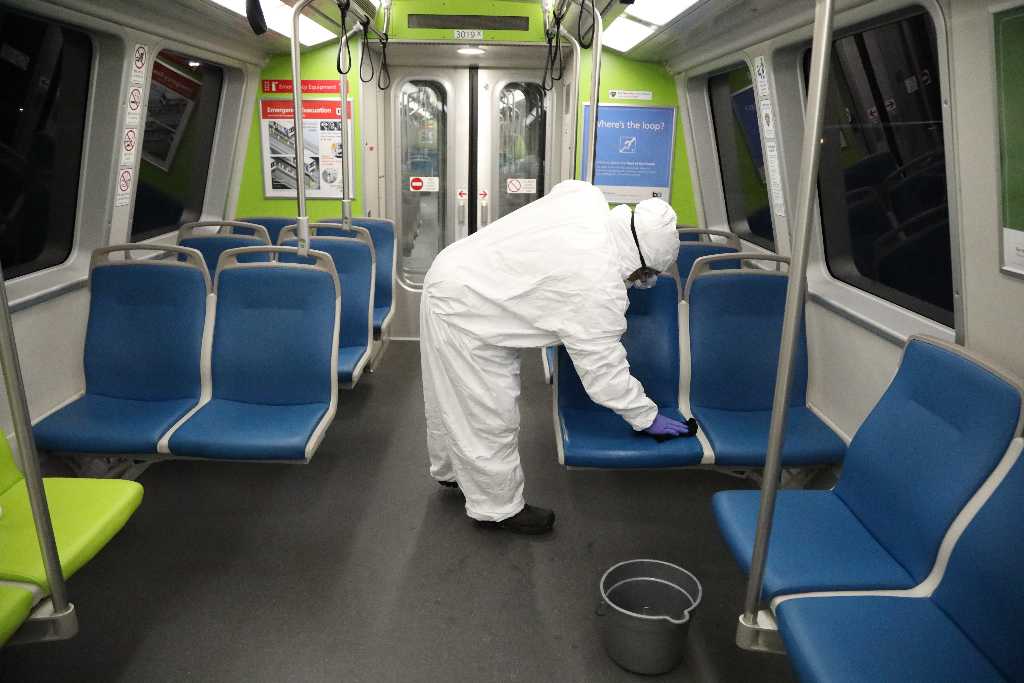
Step 4- Upgraded Air Filters & Industry Ventilation Best Practices
The air in BART cars is replaced every 70 seconds and is filtered prior to being dispersed through the window frame. After a successful pilot, BART in 2021 began replacing air filters in its HVAC systems with MERV-14 filters which can trap even smaller particles than the MERV-8 filters that were used previously. By June 2021 all cars will have MERV-14 filters.
BART is also piloting a UV-light rod filter for even greater protection in the HVAC system.
Air flow in elevators: Elevators have significant air exchange by design compared to many indoor spaces and are required by code to have openings for ventilation. While riders are in an elevator for a very short duration- one minute or two, it is important to point out that fresh air is introduced every time the elevator door opens, and BART elevators include exhaust fans in the ceiling to increase ventilation.
Step 5- Require Face Coverings Indoors and on Trains
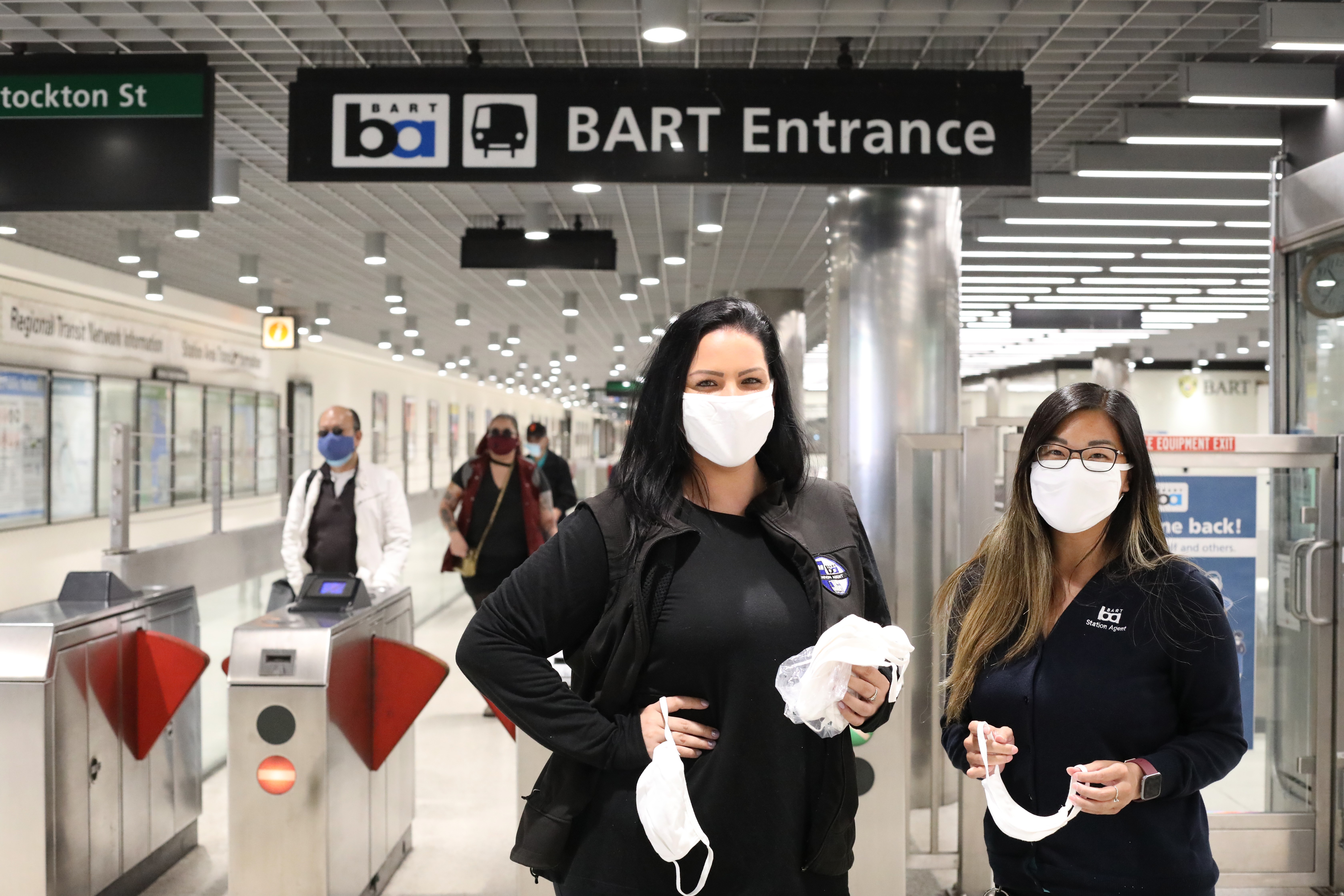
The Transportation Security Administration (TSA) has an active Security Directive that requires face coverings for all individuals in indoor areas of public transit facilities and on trains through at least Sept 13, 2021. This is even for those fully vaccinated. According to current CDC guidance, persons in outdoor areas of transit stations are encouraged, but not required, to wear a face covering.
All stations systemwide have extra masks available at the station agent booths for those who need one to ride. We’re also supplying officers and ambassadors with extra masks to hand out if necessary. Signs and audio announcements are being made.
BART survey takers are monitoring mask compliance, measuring the number of people who are properly wearing face coverings that cover both mouth and nose at all times. As of June 2021, mask compliance is an average of 95% across all hours of service.
Step 6- Increased Safety Staff
BART now has a historically high number of uniformed safety staff presence on platforms and on-board trains, including sworn officers, non-sworn personnel, fare inspectors, and ambassadors. When enforcing the face covering requirement, BART Police and staff will center their efforts on education and providing masks for those who need one. BART Police’s primary focus will continue to be addressing serious crimes. BART’s latest budget doubled the number of our Ambassadors to increase rider safety and assist with mask compliance. BART will add crisis intervention specialist to responding teams to help those experiencing homelessness or struggling with mental health or addiction. Increased attention will also be paid to keeping station entryways clear and safe for our riders. BART is also working to increase safety for girls and gender expansive youth through our Not One More Girl campaign to end sexual harassment and gender-based violence on transit.
Step 7- Mobile Payment
BART has now transitioned to Clipper-only at stations systemwide and iPhone and Andriod users can now use their phone or Apple Watch to pay for BART. The Metropolitan Transportation Commission launched the Clipper app with the option to add Clipper to your mobile wallet to pay fares.
BART fare gate readers now support Clipper payment via iPhone, Apple Watch and Android phones. All riders can use the app to immediately load funds to their Clipper card.
Clipper now offers a 20% low income discount for BART trips through the Clipper START pilot program. Clipper also offers discounts for youth, seniors, and people with disabilities (proof of eligibility in advance required).
You can now pay for parking using the official BART app. There is ample parking available at BART. The lots do not fill.
Step 8- Data Transparency
BART will continue to post daily ridership numbers at www.bart.gov/ridership showing day by day ridership trends compared to Pre-COVID-19 ridership. We’ve launched schedule-based occupancy charts that show train car loading data based on the number of riders on a specific train and how on average those riders can spread out among the cars. The data is not available in real time but the charts are posted weekly at www.bart.gov/occupancy and can be used as a planning tool to know what to expect on board each train.
Step 9- Hand Sanitizer
BART will continue to offer free hand sanitizer at every station. Every station has at least one accessible dispenser. Dispensers are inspected at least once per week to ensure they are filled and are in working order.
Step 10- Personal Hand Straps
With ridership increasing and more riders needing to stand, BART is selling (at cost) personal hand straps for riders who want to use their own. A limited supply will be handed out as a surprise giveaway inside some stations to welcome riders back. The hand straps are available for purchase for $5 plus tax on BART’s online store www.railgoods.com, by phone order by calling 510-464-7136, and in person at the Customer Service window at Lake Merritt Station (Monday-Friday 7:30 am–4:45pm). See how they work.
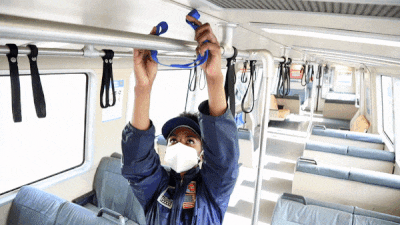
Step 11- Pilot New Seat Configuration
BART’s Fleet of the Future provides for modular seating. BART is piloting a new configuration of seats that could potentially help create space between riders. One car has been reconfigured and is now in service. The dedicated wheelchair spaces remain. BART does not plan to block off seats for use because it is difficult to enforce and is subject to vandalism.
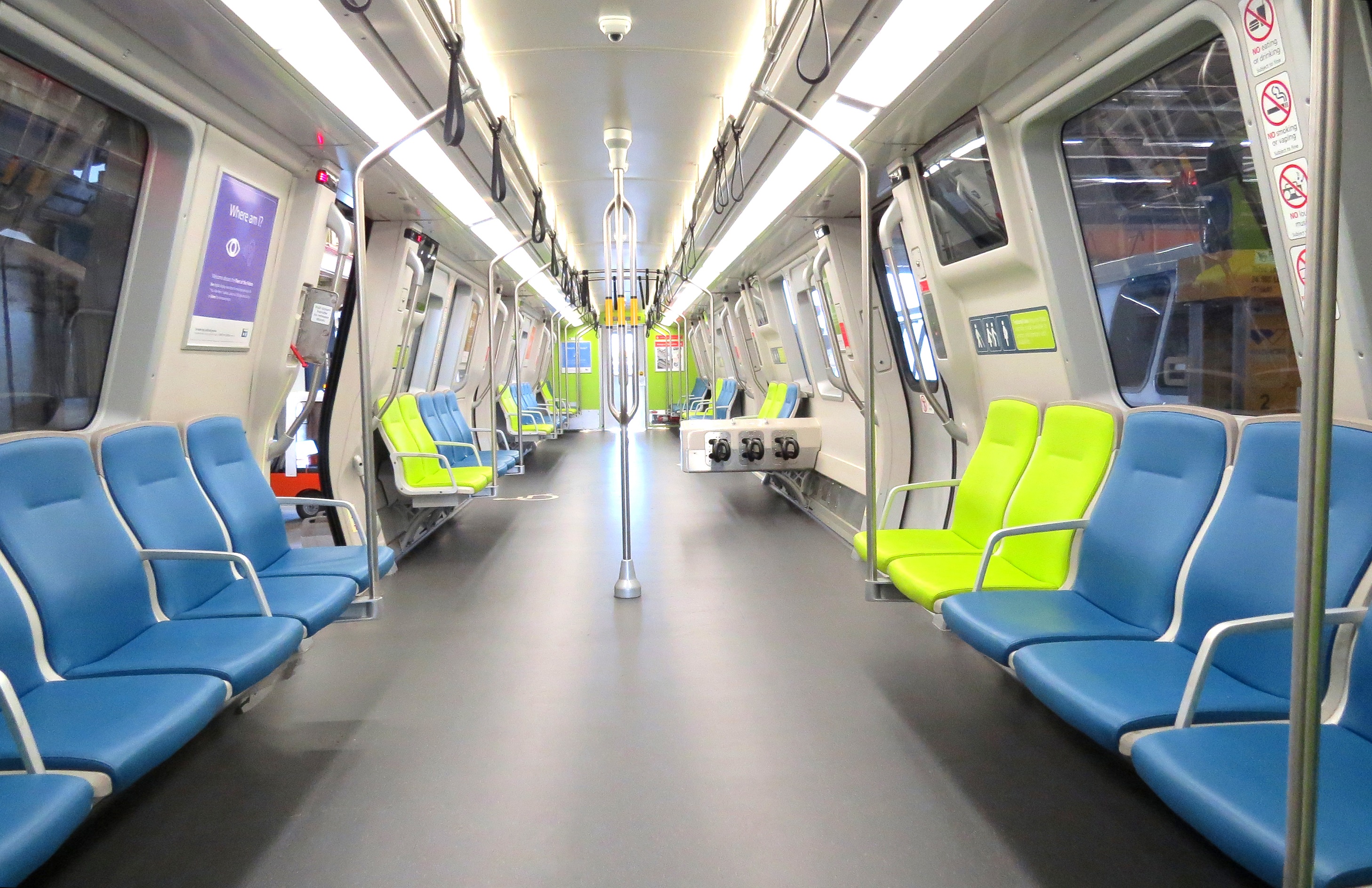
Step 12- Visual Indicators
Large decals, posters and banners are being displayed throughout the system and on-board trains to reinforce safety standards, social distancing expectations and the face covering requirement.
Step 13- Business Community Outreach
BART will encourage employers to allow for staggered shifts to help spread out the commute and avoid crowding during peak travel times. BART staff have been participating in virtual town halls with companies to answer questions about BART service and new safety measures. BART is offering personal hand straps in bulk purchases to employers to add to their welcome back to the office kits.
Step 14- Healthy Workforce
BART’s greatest asset is our employees and they must remain healthy to continue to provide service. BART is making it easy for workers to get vaccinated and we are supplying employees with PPE and COVID-19 testing. Station Agents have been advised to stay inside their booth as much as possible to limit exposure.
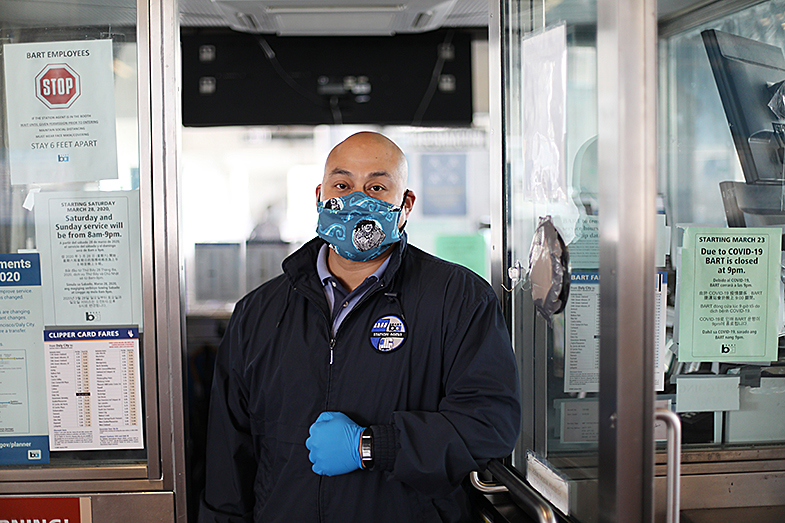
Step 15- Rebuild Infrastructure
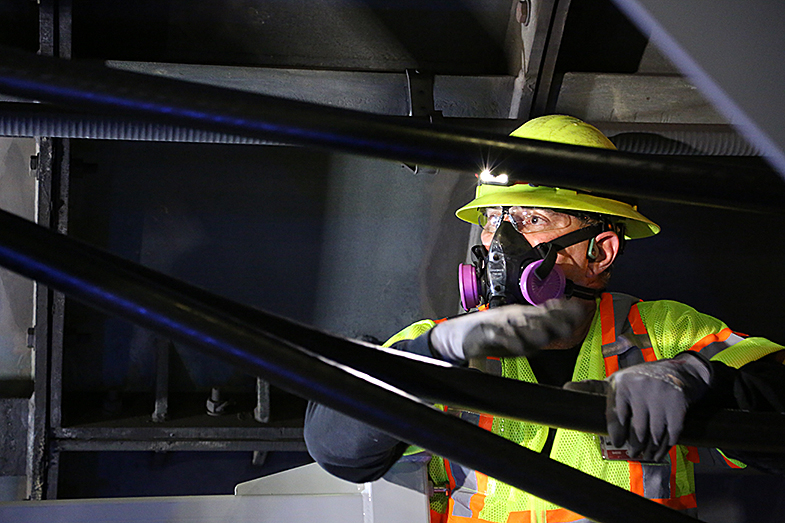 BART has accelerated infrastructure rebuilding projects facilitated by the extra work hours made available due to an earlier closing time. The increased level of work is shaving off time on some of these projects that can be disruptive to passengers. The focus has been on projects that directly improve service reliability. This includes replacing electrical cables that power trains and running rail in critical sections of trackway across system. This accelerated work ensures that when riders return to the system, it will be in better shape than when they last used it.
BART has accelerated infrastructure rebuilding projects facilitated by the extra work hours made available due to an earlier closing time. The increased level of work is shaving off time on some of these projects that can be disruptive to passengers. The focus has been on projects that directly improve service reliability. This includes replacing electrical cables that power trains and running rail in critical sections of trackway across system. This accelerated work ensures that when riders return to the system, it will be in better shape than when they last used it.
This plan was released originally released on May 27, 2020 and was last updated on May 4, 2021.
Riding Together Healthy Transit Plan
Transit operators in the nine Bay Area counties have launched the “Riding Together, Bay Area Healthy Transit Plan.” The plan is a comprehensive strategy with shared commitments to unify the transit operator’s aggressive actions to limit the spread of coronavirus (COVID-19). Outlining action items ranging from disinfecting to ventilation, the Plan is the result of an unprecedented joint effort by transit leaders to lead the Bay Area’s transit operators into recovery mode. In addition to serving as a tool for public transit agencies on various safety initiatives, the plan makes a call for action to riders and outlines their responsibilities when riding. The mitigation steps included in the plan are based on best practices from peer agencies across the globe. The commitments are also based on information from the California Department of Public Health, U.S. Centers for Disease Control and Prevention, and the World Health Organization.
Read the plan at http://www.healthytransitplan.com/
The website includes a performance dashboard on topics such as mask compliance rates and capacity for safe distancing.
The BART Board of Directors adopted a resolution on August 27, 2020 in support of the Bay Area Healthy Transit Plan.
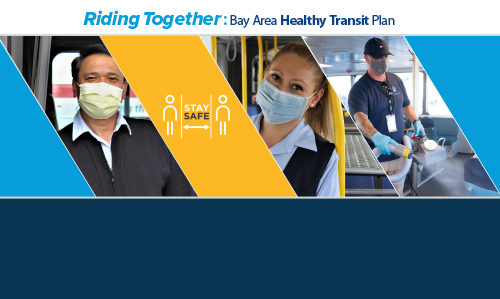
Source: Bay Area Rapid Transit
Rod Washington Writer, filmmaker, model railroader, dreamer, posting videos and articles about trains. Also, posting railfanning videos and updates about his own model railroad layout via his webpage, the rail project (coming soon).

